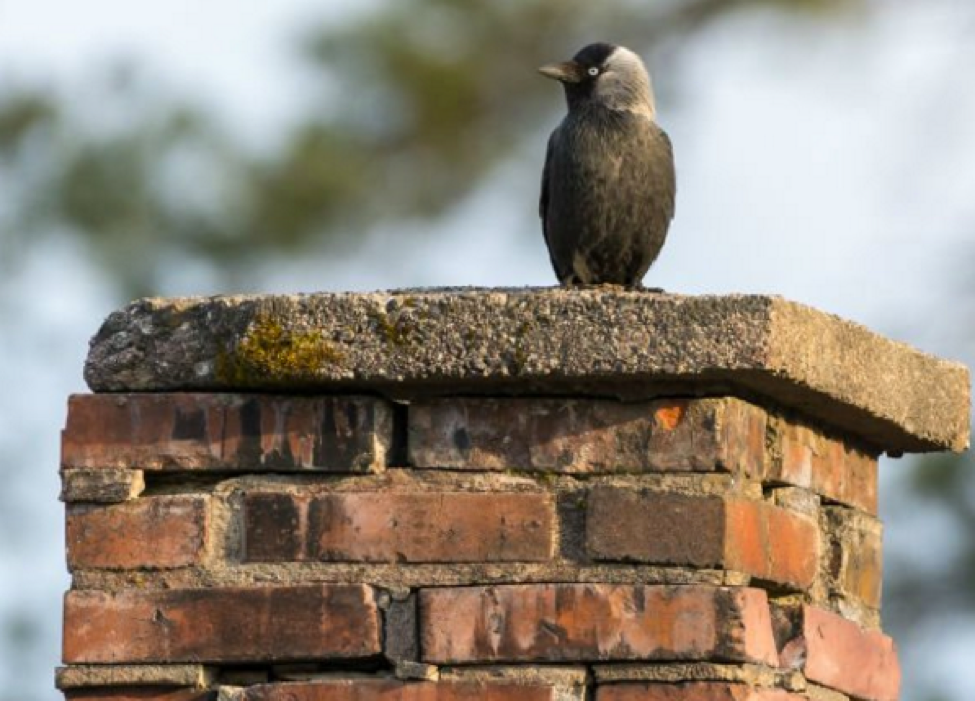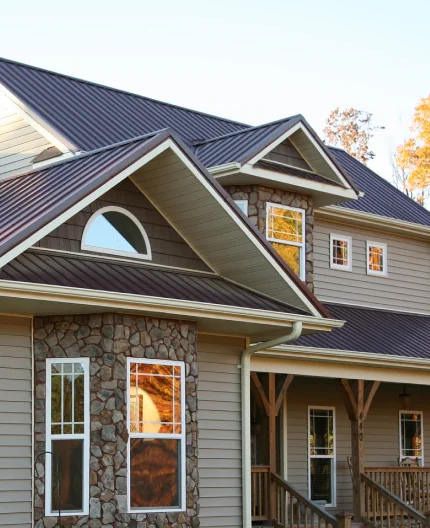How Does a Chimney Work?
Published on Tuesday October 18, 2016
There’s nothing like warming up in front of your fireplace on a chilly night. If you’re lucky enough to have a working fireplace, your chimney plays a big role in keeping it functioning properly. Have you ever wondered how your chimney actually works?
If you haven’t – the science is pretty interesting!
We’re breaking down your chimney’s anatomy and explaining exactly how it works.
How does a chimney work?
Chimneys work by removing byproduct gases, like carbon dioxide, from the air. Its function is not to remove hot air but to instead remove hot gases from the heating unit used in your home. We all think of “fireplace” when we hear “chimney,” but any heat source that burns fuel (wood, oil, gas, coal) requires a chimney.
For example, if you have a gas furnace, it has a chimney. That chimney works in the same way as the one on your wood-burning fireplace.
What is the stack effect?
As with a roof system, airflow is the cornerstone to a functional chimney.
Warm air – like smoke – should rise up and out of your chimney as part of the stack effect. This is the same principle that allows warm, moist air to escape your attic through ridge vents with the help of eave vents to properly vent your attic space.
In the case of a chimney, this rising warm air is called the draft. A functional chimney will have a strong draft that pulls gases and smoke out of the home through the chimney. A poor chimney draft can put out a flame or leave a room full of cold or contaminated air.
4 primary factors that affect chimney draft

1. Air pressure
Air pressure is the weight of the atmospheric pressure exerted onto earth. When air pressure in a home is in balance, air is flowing into the home at the same rate that it is flowing out of the home.
Lighter, warmer air is able to rise up and out of your chimney and is replaced by heavier, cooler air. This fresh, cooler air enters your home via tiny gaps around windows, doors, trim, etc.
Not all airflow in a home is bad.
While you may think that these gaps should be sealed, that’s not quite the case. If a home is sealed too tightly, or if too much air is being vented out, then negative air pressure is realized.
- When the air pressure in a home is negative, a fire may not burn, or a gas furnace may not work properly.
- On the flip side, too many air leaks in a home can cause the home itself to act like a chimney. Your house will suck warm air up and push it out through the top of your home. This creates energy inefficiency, which you will see in your energy bills!
If you find yourself wondering whether or not your chimney is working at all, an air pressure issue could be to blame. William B. Hussel, president of The Chimney Doctors, offers an easy way to test for sufficient airflow in your home using an open door or window and your fireplace.
- If you find that your airflow is insufficient, a fresh air intake can be added. This helps feed your fire with fresh air and corrects air pressure imbalances. Your local chimney sweep company or HVAC pro can help you identify and correct the causes of unbalanced air pressure in your home.
- An improperly sized flue is one of the most common reasons for chimney dysfunction. The flue is the opening in the chimney that allows the hot gases to escape. The flue is often hidden behind the masonry that surrounds it. Old flues were often made of brick or stone. Today, it’s common to line a flue with metal, clay or ceramic conduit that can withstand the intense heat from burning fuel.These materials prevent heat from transferring to the main structure while their smooth surfaces inhibit the buildup of byproducts—both properties aid in preventing chimney fires.
Refer to the graphic below to see exactly how a chimney works:
2. The Flue
Flue liners also increase a chimney’s efficiency and performance. An appropriately-sized flue should be one inch wide for every 10 square inches of fireplace opening. This 10:1 ratio enables air to travel at the perfect velocity through the flue.
If the flue is too big for the fireplace, too much air will exit the chimney and you will lose heat. If the flue is too small, then air cannot exit the chimney fast enough and you may find yourself in a smoke-filled room.
3. Chimney height
Taller chimneys produce a stronger draft.
According to Woodheat.org, taller chimneys produce a stronger draft. What does “tall” mean?
- The chimney should be at least 15 feet tall from the base of the fireplace (or insert) to the top of the chimney.
- The top of the chimney should extend at least 3 feet beyond the point at which it penetrates the roof.
- If your chimney is within 10 feet (horizontally) of another building or obstruction, then the height of your chimney should be extended to be at least 2 feet taller than that barrier.
Extending the height of your chimney serves two main purposes:
- Wind-induced downdraft is reduced
- Minimizes the likelihood of hot sparks or embers landing on rooftop
4. Obstructions and damage
Finally, to create a sufficient draft, your chimney must be free from obstructions and damage.
The tight, safe space of a chimney coupled with the added warmth from your home makes a great place for birds and squirrels to nest and store food.
Bats and chimney swifts favor the dark, vertical space that chimneys provide.
Flotsam or fowl, these obstructions prevent air from flowing out of the chimney and can create a fire hazard.
Fortunately, the solution is affordable: a chimney cap is a great way to prevent foreign objects from jamming up your chimney. They also prevent water from entering and can contain hot sparks that might have otherwise landed on your roof.
Get your chimney inspected
Annual chimney inspections are another great way to prevent damage and maintain the safety of your chimney. The CSIA categorizes chimney inspections into 3 different levels. Choose the level that best suits your needs based on the CSIA descriptions.
Now you know the answer to the question, “how does a chimney work?”
We’re here for your improvement needs.
If you find that your chimney’s not the problem and think you may need a roof replacement, you need a roofer that understands that every roof is unique. Roofs are affected by the objects on or near it, like your chimney. We’ll work with you to put together a roofing package that you can live with – including our 50-year warranty.
We bring trust and peace of mind to every Long Roofing Roof. Contact Long Roofing online to request an estimate, schedule a free, in-home consultation or find answers to any home roofing questions.
Interested in Long Home Products?
See our special offers now.
*Excludes labor. Subject to credit approval.
**Excludes labor. Subject to credit approval.
One-day installs contingent upon municipal rules and regulations.
By submitting a form, I authorize Long Home Products to contact me with information abouts its products and services via mail, email, phone and/or text at the contact information provided, even if I am on the national do not call list. Long Home Products may use automated telephone technology to initiate calls to its customers. Calls and in person estimates may be recorded for quality and training purposes.










